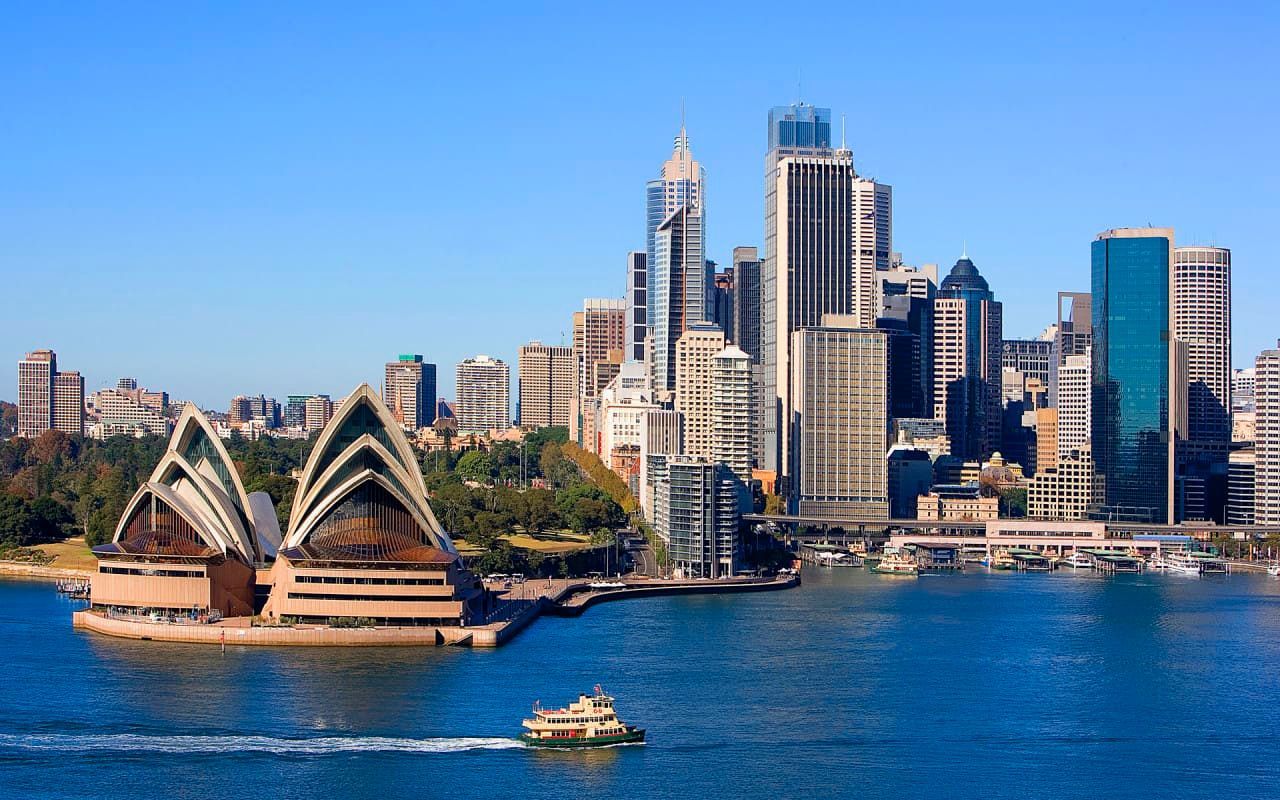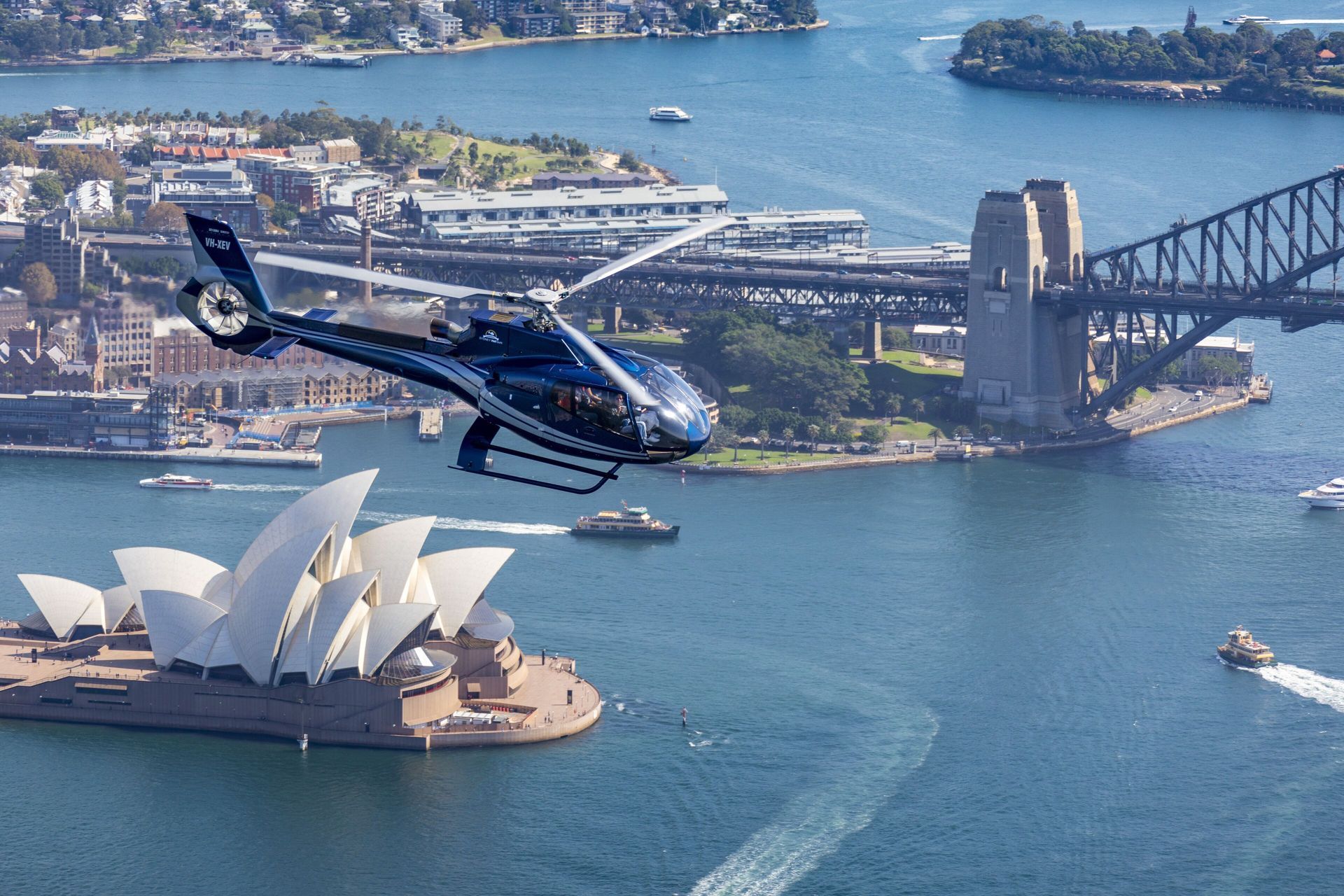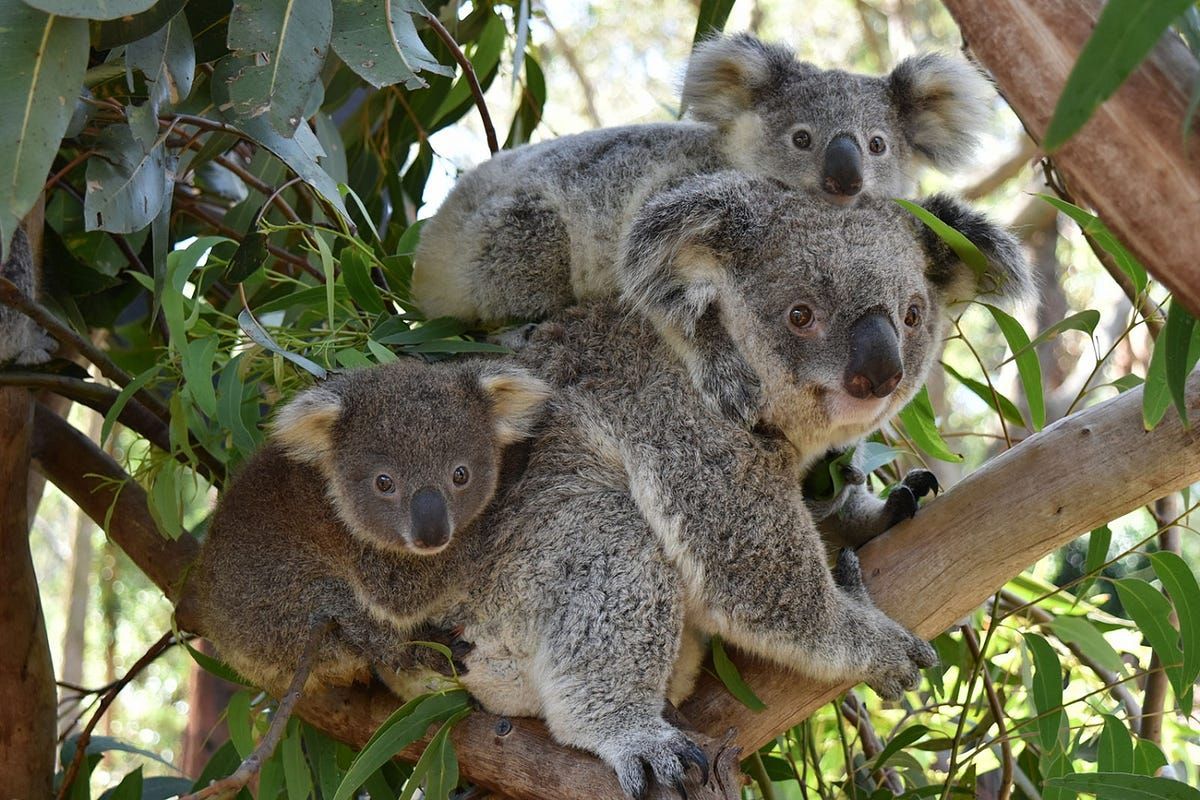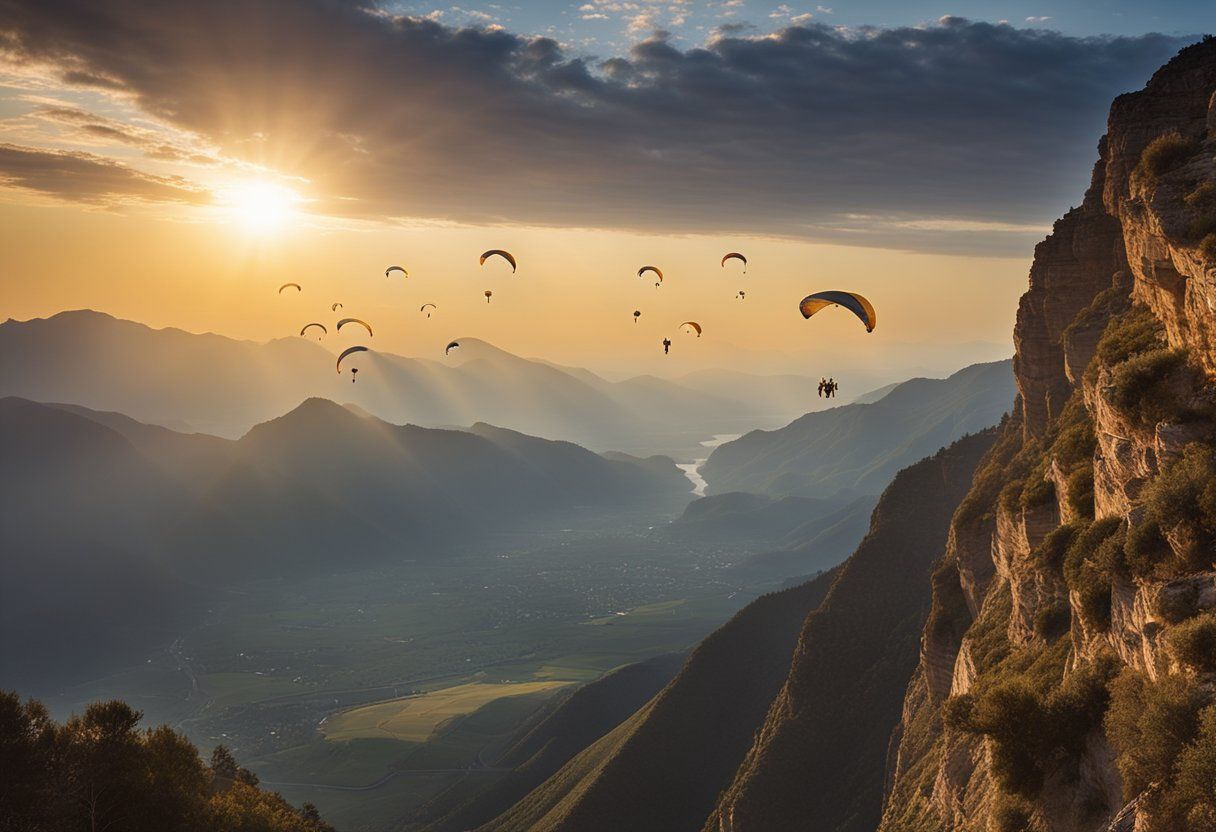To share
Embark on a transformative journey through Kakadu National Park. Witness ancient rock art, spot diverse wildlife and immerse yourself in Aboriginal culture. Discover why this UNESCO World Heritage Site is a must-see destination for nature lovers and adventure seekers alike.
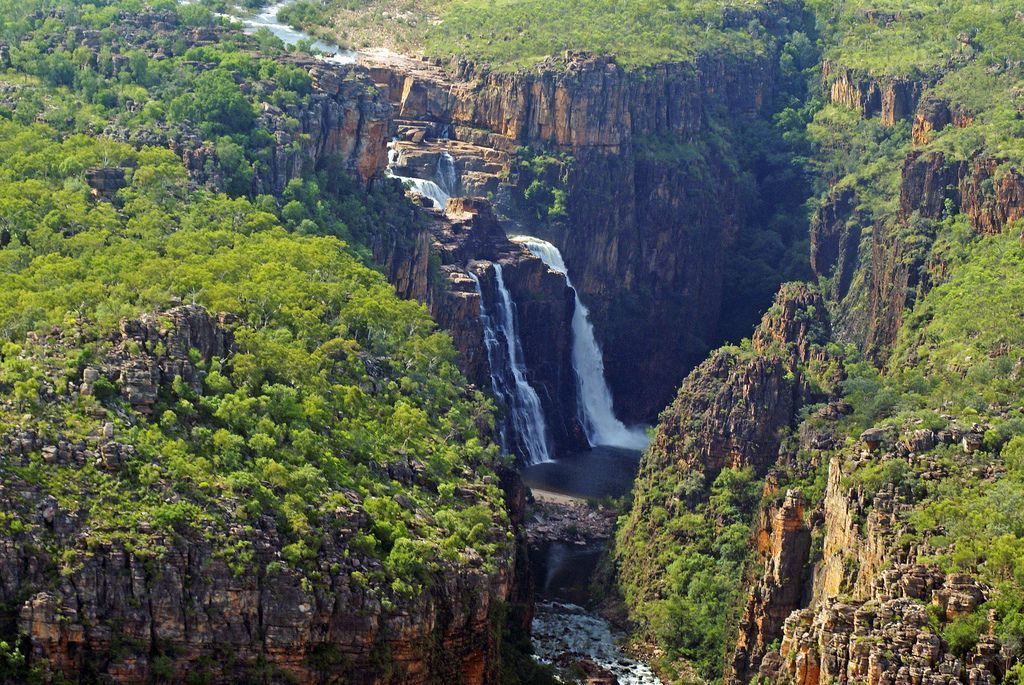
1. Introduction to Kakadu National Park
Location and size
Kakadu National Park, located in Australia's Northern Territory, spans an impressive 19,804 square kilometers. This vast expanse makes it the largest terrestrial national park in Australia, roughly half the size of Switzerland.
UNESCO World Heritage status
Kakadu National Park was inscribed on the UNESCO World Heritage List in 1981, recognizing its outstanding natural and cultural values. The park was one of the first to be listed for both its natural and cultural significance, a testament to its unique character.
Cultural significance to Aboriginal people
For over 65,000 years, Aboriginal people have called Kakadu home. The park is rich in Indigenous history, with over 5,000 recorded art sites showcasing one of the longest historical records of any group of people on Earth. The traditional owners, the Bininj/Mungguy people, continue to play a crucial role in the park's management, sharing their knowledge and cultural practices.
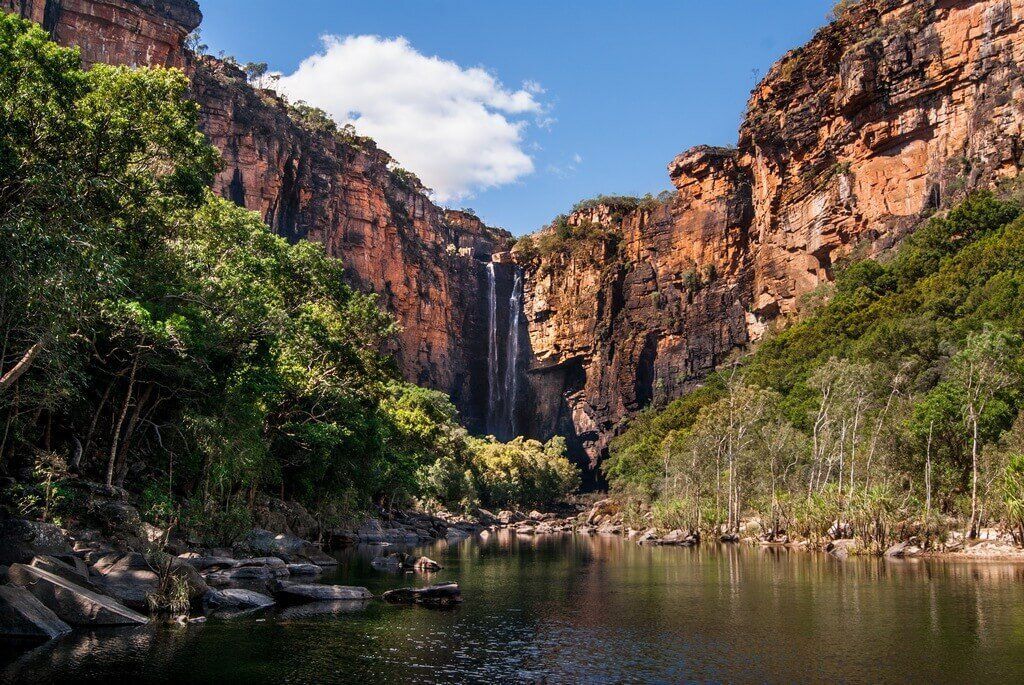
2. Breathtaking Landscapes
Rugged escarpments and plateaus
Kakadu's landscape is dominated by the Arnhem Land escarpment, a sandstone plateau rising up to 330 meters above the surrounding lowlands. This ancient formation, estimated to be over two billion years old, creates a dramatic backdrop for the park's diverse ecosystems.
"Standing atop the Arnhem Land escarpment, one can't help but feel humbled by the sheer age and grandeur of the landscape."
The plateau is crisscrossed with deep gorges and rocky outcrops, forming a complex network of microclimates that support unique plant and animal communities.
Lush wetlands and floodplains
Kakadu's wetlands are among the most productive ecosystems in northern Australia. During the wet season, which typically runs from November to April, vast areas of the park transform into extensive floodplains.
These wetlands support an incredible diversity of life, including:
- Over 280 species of birds
- 77 species of reptiles
- 55 species of fish
The Yellow Water Billabong, part of the South Alligator River system, is particularly renowned for its wildlife viewing opportunities. Here, visitors can observe saltwater crocodiles, jabirus, and a myriad of waterfowl in their natural habitat.
Winding rivers and cascading waterfalls
Kakadu is home to several major river systems, including the South and East Alligator Rivers, which carve their way through the landscape, creating stunning gorges and waterfalls.
Jim Jim Falls and Twin Falls are two of the park's most iconic water features. Jim Jim Falls, with its 200-meter drop, is particularly impressive during the wet season when water thunders over the escarpment. In the dry season, the reduced flow reveals beautiful plunge pools perfect for swimming.
"The changing seasons in Kakadu create a dynamic landscape, with each visit offering a new perspective on this ancient land."
These diverse landscapes not only provide breathtaking scenery but also play a crucial role in supporting the park's rich biodiversity. From the rugged escarpments to the lush wetlands and winding rivers, Kakadu National Park offers visitors a chance to experience some of Australia's most spectacular natural wonders.
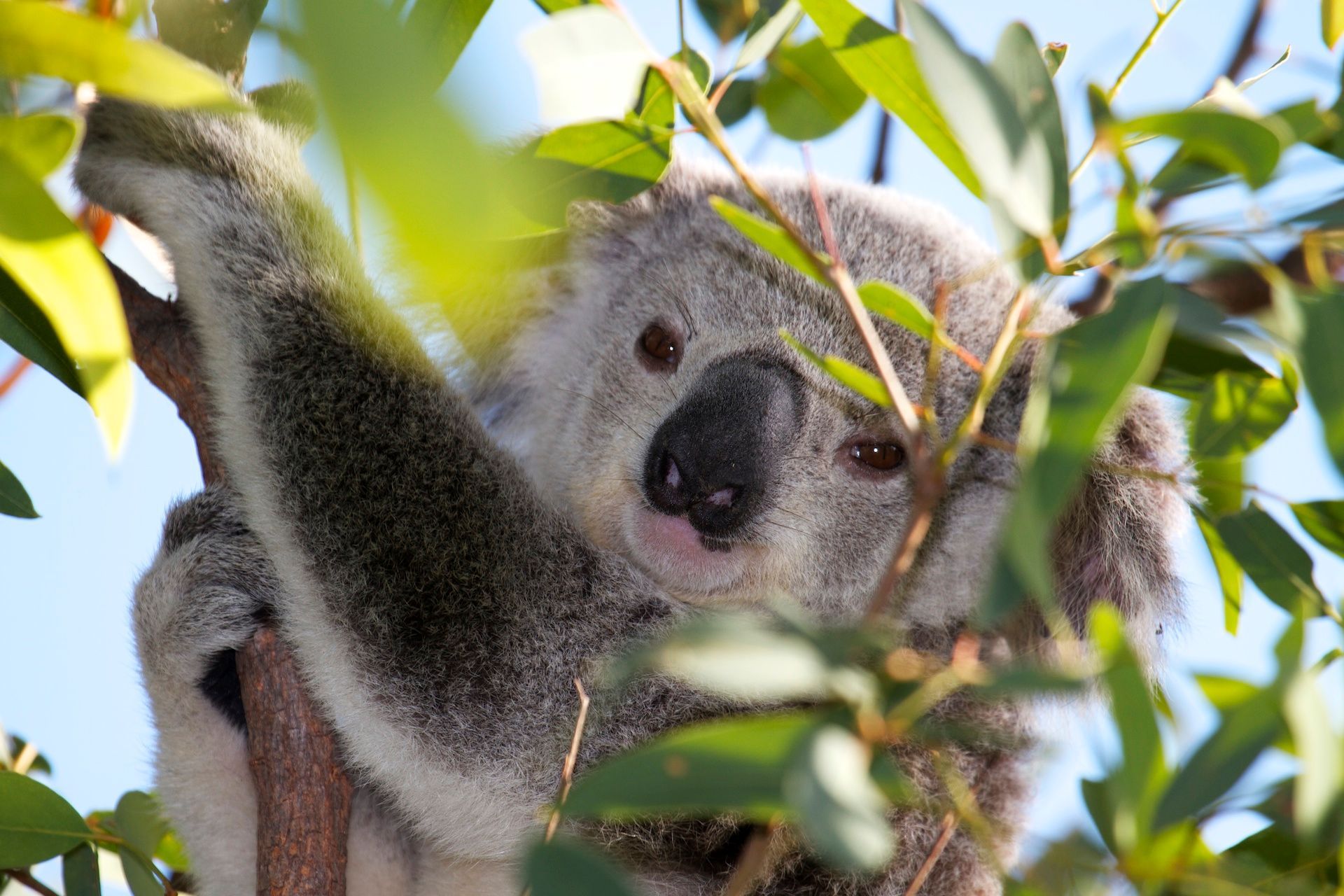
3. Diverse Wildlife Encounters
Iconic Australian Animals
Kakadu National Park is home to an array of iconic Australian animals, offering visitors a unique opportunity to observe these creatures in their natural habitat. The park's varied ecosystems support a diverse range of species, including:
- Kangaroos and Wallabies: Several species can be spotted throughout the park, particularly in grassland areas.
- Dingoes: These wild dogs are often seen roaming the park's landscapes.
- Saltwater Crocodiles: Kakadu is renowned for its large population of these prehistoric predators.
"Kakadu's wildlife diversity is truly remarkable, with over 2,000 plant species and 280 bird species calling the park home."
Rare and Endangered Species
Kakadu National Park plays a crucial role in conservation efforts, providing a sanctuary for numerous rare and endangered species. Some notable examples include:
- Northern Quoll: This small carnivorous marsupial is now endangered due to habitat loss and introduced predators.
- Pig-nosed Turtle: Kakadu is one of the few places where this unique freshwater turtle can be found.
- Speartooth Shark: The park's river systems are vital habitats for this critically endangered species.
Conservation programs within the park aim to protect these vulnerable species and their habitats, ensuring their survival for future generations.
Birdwatcher's Paradise
Kakadu National Park is a haven for bird enthusiasts, boasting an impressive variety of avian species. The park's wetlands, in particular, attract a multitude of birds, making it a prime location for birdwatching. Some notable species include:
- Magpie Geese: Large flocks can be observed in the park's wetlands.
- Jabiru: Australia's only stork species is a common sight in Kakadu.
- Rainbow Bee-eater: This colorful bird can often be spotted near water bodies.
Guided birdwatching tours are available, providing visitors with expert insights and the best opportunities to observe these magnificent creatures.
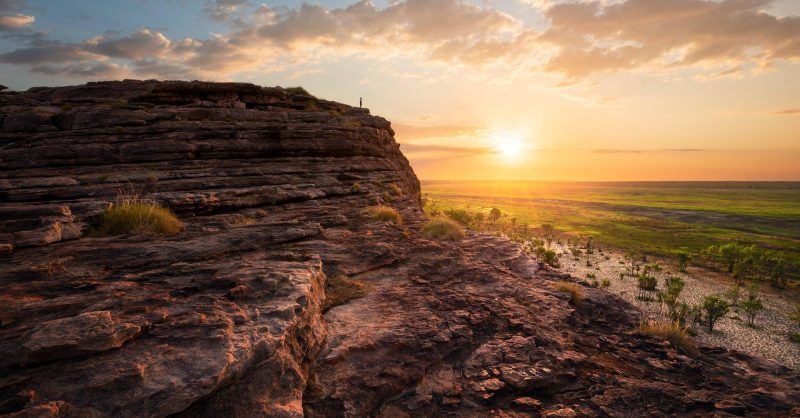
4. Aboriginal Culture and Rock Art
Ancient Rock Art Galleries
Kakadu National Park is home to one of the world's largest collections of Aboriginal rock art, with some sites dating back over 20,000 years. These ancient galleries offer a unique glimpse into the lives and beliefs of the Indigenous people who have inhabited this land for millennia. Notable rock art sites include:
- Ubirr: Known for its extensive galleries depicting creation ancestors and early contact with European explorers.
- Nourlangie: Features intricate artwork showcasing the relationship between people and their environment.
- Nanguluwur: A lesser-known site with diverse art styles spanning different periods.
Visitors can explore these sites through guided tours or self-guided walks, gaining insights into the rich cultural heritage of the region.
Dreamtime Stories and Legends
The rock art and landscape of Kakadu are intrinsically linked to the Dreamtime stories and legends of the Aboriginal people. These narratives explain the creation of the land, its features, and the laws governing human behavior. Some key aspects include:
- Creation Ancestors: Powerful beings who shaped the landscape and established the natural order.
- Totemic Relationships: The spiritual connections between people, animals, and plants.
- Seasonal Changes: Stories explaining the annual cycle of wet and dry seasons.
Understanding these stories enhances visitors' appreciation of the park's cultural significance and deepens their connection to the land.
Contemporary Indigenous Communities
Today, Kakadu National Park is jointly managed by its traditional Aboriginal owners and Parks Australia, ensuring the preservation of both natural and cultural values. The park is home to several Indigenous communities who maintain their connection to the land through:
- Traditional Land Management Practices: Including controlled burning to promote biodiversity.
- Cultural Tours: Offering visitors authentic experiences and insights into Aboriginal culture.
- Art Centers: Where visitors can purchase traditional and contemporary Indigenous artwork.
Engaging with these communities provides visitors with a deeper understanding of the living culture that continues to thrive in Kakadu.

5. Seasonal Changes and Natural Phenomena
The six seasons of Kakadu
Kakadu National Park's climate is characterized by six distinct seasons, each offering unique experiences for visitors:
- Gudjewg (monsoon season): December to March
- Banggerreng (knock 'em down storm season): April
- Yegge (cooler but still humid season): May to mid-June
- Wurrgeng (cold weather season): mid-June to mid-August
- Gurrung (hot dry weather): mid-August to mid-October
- Gunumeleng (pre-monsoon storm season): mid-October to late December
These seasons are based on the traditional knowledge of the Bininj/Mungguy people, who have inhabited the region for thousands of years. Each season brings changes in weather patterns, flora, and fauna, providing visitors with diverse experiences throughout the year.
Dramatic monsoons and flooding
During the monsoon season (Gudjewg), Kakadu undergoes a remarkable transformation:
- Heavy rainfall causes rivers and floodplains to swell
- Waterfalls reach their peak flow, creating spectacular views
- Lightning storms illuminate the night sky
- Humidity levels increase, creating a lush, tropical atmosphere
This period of intense rainfall is crucial for the park's ecosystem, replenishing water sources and supporting the growth of vegetation. However, it can also lead to challenging conditions for visitors, with some areas becoming inaccessible due to flooding.
Dry season transformations
As the wet season transitions into the dry season, Kakadu experiences significant changes:
- Water levels in billabongs and rivers recede
- Vegetation dries out, increasing the risk of bushfires
- Wildlife congregates around remaining water sources
- Cooler temperatures and clearer skies prevail
The dry season, particularly during Wurrgeng and Gurrung, is often considered the ideal time for visitors to explore Kakadu. The weather is more comfortable, and many areas of the park become accessible as floodwaters recede.
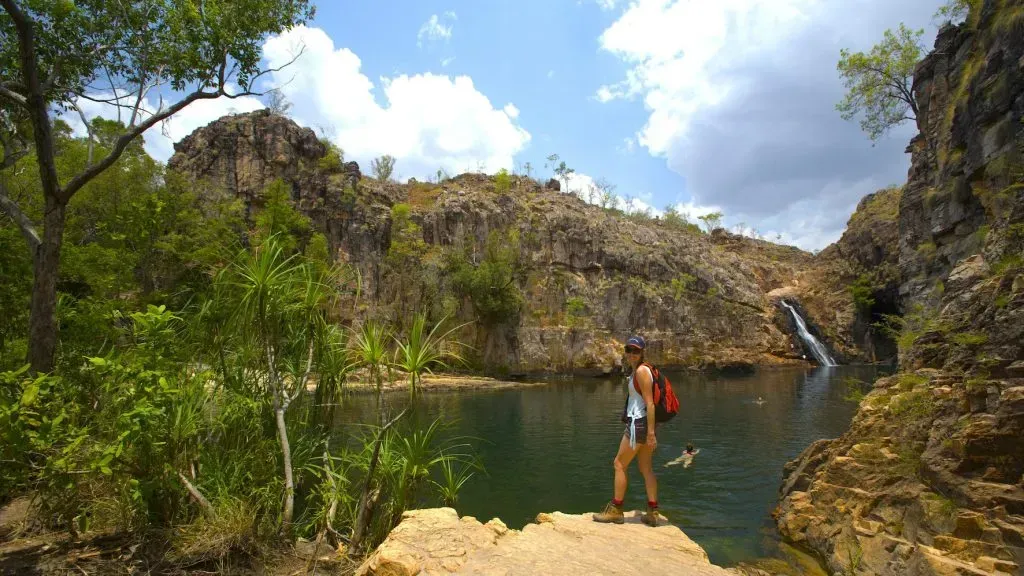
6. Adventure Activities and Experiences
Guided tours and walks
Kakadu offers a range of guided tours and walks to help visitors explore and understand the park's natural and cultural heritage:
- Aboriginal-led cultural tours provide insights into traditional knowledge and practices
- Ranger-guided walks offer expert information on the park's flora, fauna, and geology
- Night tours allow visitors to experience the park's nocturnal wildlife
- Rock art tours showcase the ancient artworks found throughout the park
These guided experiences enhance visitors' understanding and appreciation of Kakadu's unique environment and cultural significance.
Scenic flights and boat cruises
For a different perspective on Kakadu's landscapes, visitors can opt for scenic flights or boat cruises:
- Scenic flights offer breathtaking aerial views of the park's diverse terrain
- Fixed-wing aircraft and helicopter tours are available, catering to different preferences and budgets
- Boat cruises on Yellow Water Billabong provide close encounters with wildlife, including crocodiles and diverse bird species
- Sunset cruises offer spectacular views and photo opportunities
These activities allow visitors to appreciate the scale and beauty of Kakadu's landscapes from unique vantage points.
Camping and outdoor recreation
Kakadu National Park provides numerous opportunities for camping and outdoor activities:
- Designated campgrounds cater to various preferences, from basic bush camping to sites with amenities
- Bushwalking trails range from short walks to challenging multi-day hikes
- Swimming in designated areas (always check for crocodile warnings)
- Fishing in permitted locations, following park regulations
- Wildlife watching, with opportunities to spot diverse species throughout the park
Camping in Kakadu allows visitors to immerse themselves in the park's natural environment and experience its changing moods throughout the day and night.
"Kakadu National Park offers a unique blend of natural wonders and cultural heritage, providing visitors with unforgettable experiences across its six distinct seasons."
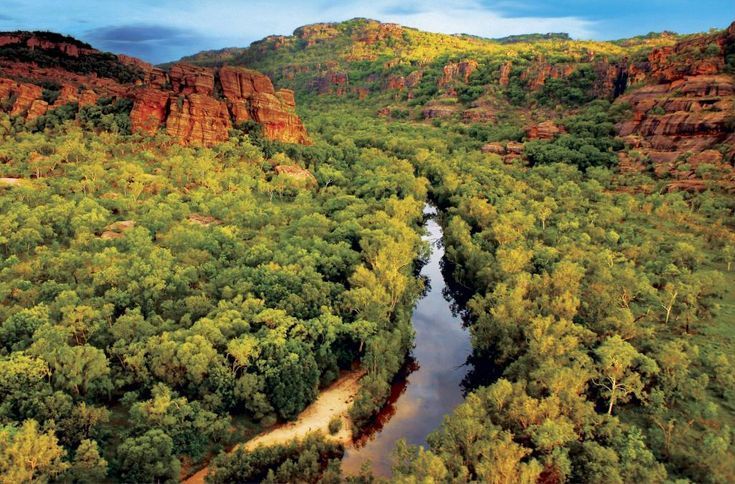
7. Conservation and Environmental Challenges
Protecting biodiversity
Kakadu National Park is home to an incredible array of plant and animal species, making biodiversity conservation a top priority. The park's management team works tirelessly to maintain the delicate balance of ecosystems within Kakadu. This involves monitoring populations of endangered species, implementing breeding programs, and controlling threats to native wildlife.
One of the key strategies employed is the use of traditional Indigenous land management practices, which have proven effective in maintaining biodiversity over thousands of years. These methods, combined with modern scientific approaches, create a comprehensive conservation strategy.
Managing invasive species
Invasive species pose a significant threat to Kakadu's native flora and fauna. The park faces challenges from both introduced plants and animals, which can outcompete or prey upon native species. Some of the most problematic invasive species in Kakadu include:
- Feral pigs
- Cane toads
- Mimosa pigra (a invasive shrub)
- Gamba grass
Park rangers and scientists employ various methods to control these species, including trapping, targeted removal, and biological control agents. However, the battle against invasive species is ongoing and requires constant vigilance and adaptation of management strategies.
Climate change impacts
Climate change presents a growing challenge for Kakadu National Park. Rising temperatures and changing rainfall patterns are already affecting the park's ecosystems. Some of the observed and predicted impacts include:
- Altered fire regimes
- Changes in vegetation patterns
- Sea level rise affecting coastal areas
- Increased frequency and intensity of extreme weather events
To address these challenges, park management is focusing on enhancing ecosystem resilience, conducting ongoing research to understand climate impacts, and developing adaptive management strategies.
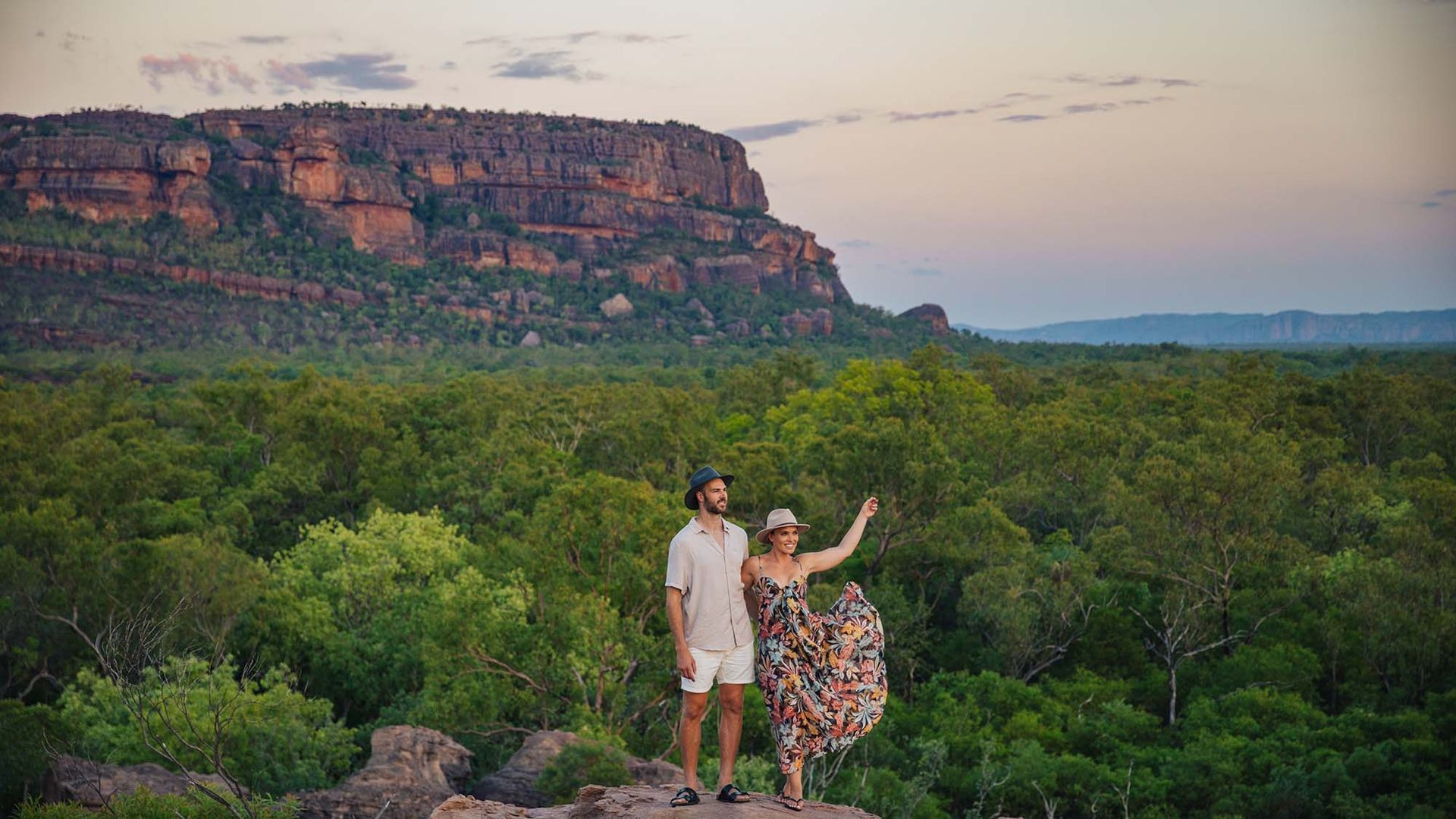
8. Planning Your Visit to Kakadu
Best times to visit
Kakadu experiences two distinct seasons: the wet season (November to April) and the dry season (May to October). Each season offers unique experiences:
Dry Season (May to October):
- More accessible roads and walking tracks
- Lower humidity and cooler temperatures
- Better wildlife viewing opportunities
Wet Season (November to April):
- Spectacular waterfalls and lush landscapes
- Fewer crowds
- Unique wildlife experiences, such as increased bird activity
The shoulder seasons (April-May and September-October) often provide a good balance of accessibility and natural beauty.
Accommodation options
Kakadu offers a range of accommodation options to suit different preferences and budgets:
- Hotels and resorts: For those seeking comfort and amenities
- Camping grounds: For visitors who want to immerse themselves in nature
- Safari camps: Offering a blend of comfort and wilderness experience
- Permanent bush camps: Providing a more rustic experience
It's advisable to book accommodation in advance, especially during peak season (June to August).
Safety and park regulations
Visitor safety is paramount in Kakadu National Park. Some key safety considerations and regulations include:
- Always check current park alerts and road conditions before traveling
- Observe all warning signs, especially those related to crocodiles
- Carry sufficient water and supplies when hiking or exploring remote areas
- Respect sacred Indigenous sites and obtain necessary permits for certain areas
- Follow fire safety guidelines, especially during the dry season
- Purchase a park pass before entering Kakadu
Summary
Kakadu National Park offers visitors an unparalleled opportunity to experience Australia's natural wonders and rich Indigenous culture. From its diverse ecosystems to its ancient rock art, Kakadu provides a truly unique and awe-inspiring adventure. While the park faces ongoing conservation challenges, efforts to protect its biodiversity and adapt to climate change ensure that future generations can continue to enjoy this remarkable landscape.
Frequently Asked Questions
- Q: How long should I plan to stay in Kakadu National Park?
A: A minimum of 3-4 days is recommended to experience the park's highlights, but a week or more allows for a more comprehensive exploration. - Q: Are there guided tours available in Kakadu?
A: Yes, various guided tours are available, including cultural tours led by Indigenous guides, wildlife spotting tours, and scenic flights. - Q: Is it safe to swim in Kakadu's waterholes?
A: Some waterholes are designated for swimming, but always check current safety notices and obey all warning signs due to the presence of saltwater crocodiles in many areas. - Q: What wildlife can I expect to see in Kakadu?
A: Kakadu is home to diverse wildlife, including kangaroos, wallabies, dingoes, and over 280 bird species. Saltwater crocodiles are also common in many waterways. - Q: Can I visit Kakadu National Park in the wet season?
A: Yes, but be aware that some areas may be inaccessible due to flooding. The wet season offers unique experiences such as dramatic landscapes and increased bird activity.

